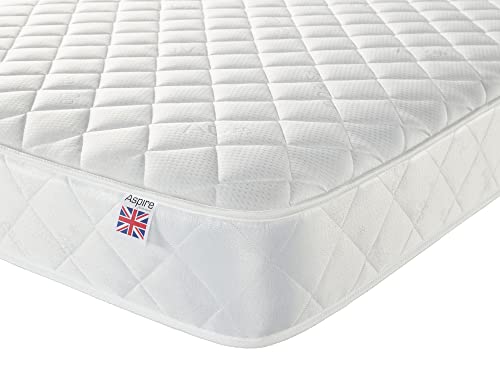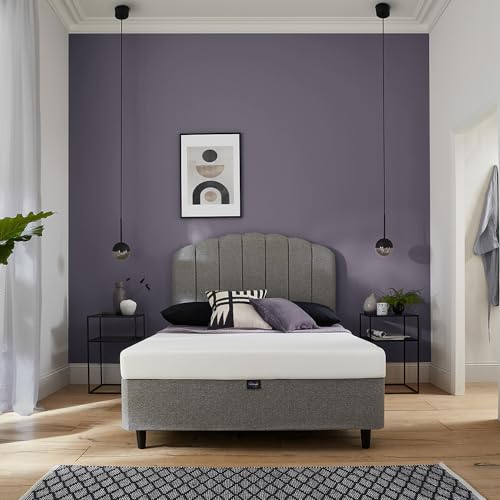You'll Never Guess This Kids Beds Bunk's Benefits
2024.07.25 12:53
 Kids Beds Bunk
Kids Beds BunkBunk beds can add drama to kids' rooms and provide a sense of adventure. To make bunks more appealing to kids, Ms. Keenan often includes a bookcase or an reading lamp in each sleeping nook.
 Many of our kids beds can be converted into two beds that are complete, perfect if you plan to let your children move to their own bedrooms at some point. Choose from finishes such as brushed white, gray and rich walnut.
Many of our kids beds can be converted into two beds that are complete, perfect if you plan to let your children move to their own bedrooms at some point. Choose from finishes such as brushed white, gray and rich walnut.Ladders or Stairs
When choosing kids beds bunk there is the option to pick between ladders or stairs. Ladders are less expensive and easy to install, and they provide an easy method of climbing into the top bunk. They are also considered safer than staircases, as they have a larger area for children to step on and a built-in handrail. They also have grooves on the steps, which prevent slippage when climbing up or down the bed.
However, if you prefer the design and style of stairs, they could be a beautiful addition to your bunk bed. Staircases are also suitable for rooms that are limited on space since they don't obstruct the space as ladders do. They can be constructed from wood or metal, and they can match the wide variety of bedroom designs. Some staircases are even equipped with storage drawers. These are a great way to add more space to the bunk bed.
Another factor to consider when choosing between stairs and a ladder is the age of your child. While it is recommended that no one sleeps on the top bunk under the age of 6, children who are comfortable with vertical climbing might be better off using stairs than a ladder. If you are planning to use your cheap bunk beds for kids bed to accommodate guests, for example, young children or adults with limitations in mobility, it's best to use stairs.
A straight staircase on the sides of the bunk requires a minimum of 95" of space on each side. If you do not have the space, you can opt for an u-shaped staircase that doesn't require as much room but allows you to get access to the top bunk safely and securely. Certain beds let you detach the stairs when not being used. This reduces the size of the bed and makes it more adaptable to multi-purpose spaces. You can also find staircases that connect to the ends of the bed and eliminate the requirement for a separate handrail, and makes it easier for children to climb up and down.
Guard Rails
Guard rails let children climb into and out of their beds without assistance and give them an experience of freedom and confidence. They must be positioned correctly to ensure there are no gaps or loosening in between the guardrails and the frame of the bed. Follow the manufacturer's guidelines when installing guard rails and ensure that you inspect them on a regular basis to ensure they are not loose or have holes that could cause the entrapment.
One of the most important safety concerns for bunk beds is to keep them free from electrical devices and other items that could become projectiles if your children play or sleep. Position bunk beds away from windows to prevent an injury to fall risk when your children climb up on the upper level.
You might want to put a nightlight on the ladder so that it can illuminate the ladder's climb and descent when your child awakes at night to use the bathroom, or if they are awakened by an erupting storm and have to leave their bedroom.
A safety net can be put up on top of the bunk to keep children from falling out when they are sleeping or playing. This is especially a good idea for older kids, who may be more likely to sleep on the top bunk.
Guardrails should be secured to the bunk bed structure and are not removed without the use tools. The openings in the guardrails that are above the mattress foundation shall not be greater than 3.5 inches to avoid strangulation and entrapment. To test this, place the wedge block shown in Figure 1 into each opening in the lower edge of the highest member of the guardrail and above the mattress's underside foundation. Then apply a 33-lbf (147-N) force in a direction perpendicular to the plane of the largest end of the block, and maintain it for a period of 1 minute.
It's a good idea to instruct your children not to hang any objects on the ladder or guardrail, such as belts, clothes, or sporting equipment. Instead you should make use of an organized rack to keep these objects from becoming an injury to your child. Also, ensure that more than one kid does not sleep on the top of the bunk as this could create an imbalance that could cause falls.
Mattresses
When choosing a mattress to use for bunk beds, take into account the size of your child and their age. A bunk mattress should last at the least eight years or until siblings stop sharing a bedroom. You'll want to choose one that grows with your child, and still offer enough comfort as they grow older.
There are many options for bunk mattress sizes. They are typically twin or full size. If your children suffer from asthma or allergies you should choose a hypoallergenic mattress with a dust mite barrier and a cover that wicks moisture. Kids are likely to experience lots of accidents and spills, which is why a mattress that has an antimicrobial layer will to shield the foam from harmful bacteria and germs.
The feel of your mattress is important. Children typically weigh less than adults, which means they need mattresses that feel firm, but also comfortable. A lot of hybrid and latex mattresses have an extra firm side as well as a soft side to accommodate both children's needs.
Memory foam mattresses can work well for kids However, they're not our first choice since they can retain heat and could be too harsh on young spines. Consider a hybrid or latex mattress instead, which offer solid support and cooling infusions that will keep your child or guest sleeping cool and comfortable.
Low-profile mattresses are often the best option for bunk beds for children. These are designed to be smaller than standard mattresses and increase the height of the safety rails for the top bunk. They also eliminate "filler" materials to offer top quality and slim designs.
Consider an innerspring model or hybrid with upper comfort layers which can be removed and replaced as your child develops. These models can provide an idea of the durability of the mattress as your child grows. You can also put in an extra bed skirt or mattress pad to stop it from sliding. Some beds have side rails or lip that are built-in to stop this.
Storage
Bunk beds are a great option for saving space in rooms shared by children. Bunk beds can also be a cost-effective alternative to purchasing two large single beds. Many bunks offer the option to add a trundle, which can be tucked under the bottom bunk when not in use.
You might want to consider installing a bedroom for your child furniture combination set that includes bookcases, desks, and/or dressers to maximize storage space in a room that has bunk beds. This will allow you to keep all your child's personal items, clothing and toys in one place without cramming them into overstuffed chests or closets. These bedroom furniture sets are available from a variety of retailers and usually comply with all safety standards of the federal government.
Stacked bunks are a playground for the imagination as kids can turn the space beneath into cozy places to hide and play. Designer Elizabeth Georgantas stacked six bunks to create the ultimate kids bunk beds with mattresses space. It can be used as a place for sleeping, playing or even for superhero cape twirling. The room is decorated with a bubble wallcovering from Chasing Paper, and the ceiling is painted Benjamin Moore Blue Jean.
If you are unable to construct a staircase to your bunk that is stacked the ladder could be a simple solution. These ladders are built with a combination of Single Socket Tee, Flange and 90 Degree Side Outlet Tee fittings and can be easily adjusted to alter the distance between ladder rungs to make it easier for children to climb. The rungs of the ladder are also positioned so that they're in line with the ground rather than above it, to make climbing less intimidating.
Another method to maximize space in a room with bunk beds is to put up loft kids beds which can be lowered to just above the floor. This allows you to slide dressers, desks or toy chests directly beneath the beds. This is a great method to maximize space in bedrooms that are small or in large family homes where beds must be capable of accommodating multiple sleepers.
